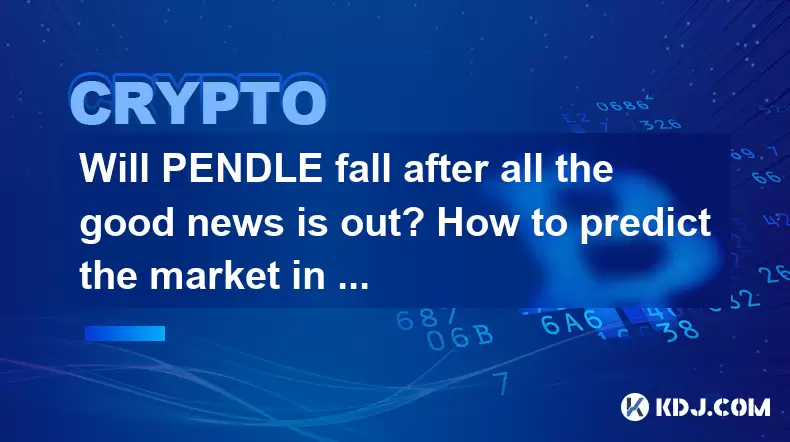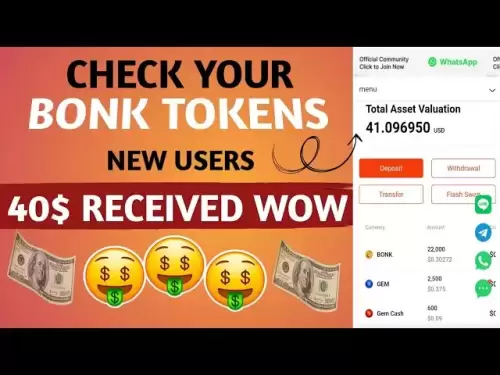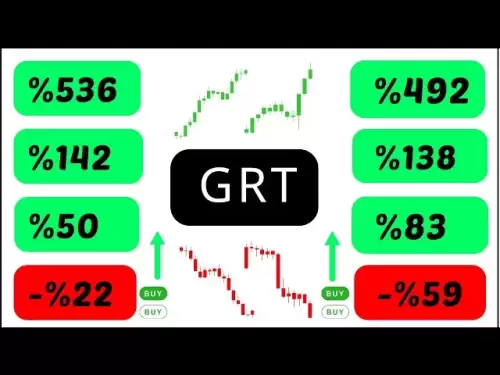-
 Bitcoin
Bitcoin $107,896.0459
2.21% -
 Ethereum
Ethereum $2,435.2616
0.04% -
 Tether USDt
Tether USDt $1.0004
-0.01% -
 XRP
XRP $2.2018
-0.04% -
 BNB
BNB $647.5191
0.76% -
 Solana
Solana $144.4128
0.58% -
 USDC
USDC $0.9999
-0.01% -
 TRON
TRON $0.2730
-0.32% -
 Dogecoin
Dogecoin $0.1660
1.16% -
 Cardano
Cardano $0.5723
-1.81% -
 Hyperliquid
Hyperliquid $37.4395
-0.04% -
 Bitcoin Cash
Bitcoin Cash $485.2395
7.09% -
 Sui
Sui $2.7770
0.33% -
 Chainlink
Chainlink $13.2388
-0.84% -
 UNUS SED LEO
UNUS SED LEO $9.0047
-0.11% -
 Stellar
Stellar $0.2431
-1.84% -
 Avalanche
Avalanche $17.7557
-1.65% -
 Toncoin
Toncoin $2.8566
-1.08% -
 Shiba Inu
Shiba Inu $0.0...01168
0.88% -
 Litecoin
Litecoin $84.9442
0.32% -
 Hedera
Hedera $0.1513
-1.26% -
 Monero
Monero $315.0784
-0.32% -
 Ethena USDe
Ethena USDe $1.0001
-0.04% -
 Polkadot
Polkadot $3.4120
-0.77% -
 Dai
Dai $0.9999
0.00% -
 Bitget Token
Bitget Token $4.3352
1.20% -
 Pi
Pi $0.6312
17.49% -
 Uniswap
Uniswap $6.9875
-0.83% -
 Pepe
Pepe $0.0...09694
-1.76% -
 Aave
Aave $259.5059
-1.43%
Will PENDLE fall after all the good news is out? How to predict the market in advance?
PENDLE's price may fall after good news is absorbed; factors like market sentiment, adoption, competition, and regulations will influence its movement.
May 07, 2025 at 04:56 pm

The cryptocurrency market is known for its volatility, and tokens like PENDLE are no exception. With recent good news surrounding PENDLE, many investors are wondering if the token's price will fall after the news has been fully absorbed by the market. In this article, we will explore the factors that could influence PENDLE's price movement and discuss strategies for predicting market trends in advance.
Understanding PENDLE and Its Recent News
PENDLE is a decentralized finance (DeFi) protocol that allows users to tokenize and trade future yield from various DeFi platforms. The project has recently been in the spotlight due to several positive developments, including partnerships with major DeFi projects and the launch of new features that enhance its utility.
The good news surrounding PENDLE has led to a surge in its price, as investors rush to capitalize on the project's potential. However, the question remains: will PENDLE fall after all the good news is out? To answer this, we need to consider several factors that could influence its price movement.
Factors Influencing PENDLE's Price Movement
Several factors can influence the price of PENDLE after the good news has been absorbed by the market. These include:
Market Sentiment: The overall sentiment in the cryptocurrency market can significantly impact PENDLE's price. If the market is bullish, PENDLE may continue to rise despite the news being fully absorbed. Conversely, a bearish market could lead to a price drop.
Adoption and Usage: The actual adoption and usage of PENDLE's platform will play a crucial role in its price movement. If the new features and partnerships lead to increased usage, the price may remain stable or even continue to rise.
Competition: The DeFi space is highly competitive, and the emergence of new projects or improvements in existing ones could affect PENDLE's market position and, consequently, its price.
Regulatory Developments: Changes in regulations related to cryptocurrencies and DeFi could impact PENDLE's price. Positive regulatory news could boost the price, while negative developments could lead to a decline.
How to Predict the Market in Advance
Predicting the cryptocurrency market in advance is challenging but not impossible. Here are some strategies that can help you make more informed predictions:
Technical Analysis: Technical analysis involves studying historical price data and using various indicators to identify patterns and trends. Common tools include moving averages, relative strength index (RSI), and Bollinger Bands. By analyzing these indicators, you can make predictions about future price movements.
Fundamental Analysis: Fundamental analysis involves evaluating the underlying factors that could influence a cryptocurrency's value. For PENDLE, this could include analyzing its team, partnerships, technology, and the overall health of the DeFi market. By understanding these fundamentals, you can make more informed predictions about its future price.
Sentiment Analysis: Sentiment analysis involves gauging the overall sentiment in the cryptocurrency community. This can be done by monitoring social media platforms, forums, and news outlets. Positive sentiment can indicate a potential price increase, while negative sentiment could signal a decline.
On-Chain Analysis: On-chain analysis involves studying blockchain data to gain insights into a cryptocurrency's network activity. For PENDLE, this could include analyzing transaction volumes, active addresses, and token distribution. By understanding these metrics, you can make more accurate predictions about its price movement.
Implementing Technical Analysis for PENDLE
To predict PENDLE's price movement using technical analysis, follow these steps:
Choose a Trading Platform: Select a reputable trading platform that offers charting tools and technical indicators. Popular options include Binance, Coinbase Pro, and TradingView.
Select the Timeframe: Decide on the timeframe you want to analyze. Common timeframes include 1-hour, 4-hour, and daily charts. The choice depends on your trading strategy and goals.
Apply Technical Indicators: Add technical indicators to your chart. For PENDLE, you might want to use the following:
- Moving Averages: Add a 50-day and 200-day moving average to identify trends and potential support and resistance levels.
- Relative Strength Index (RSI): Use the RSI to gauge the strength of PENDLE's price movements and identify potential overbought or oversold conditions.
- Bollinger Bands: Apply Bollinger Bands to identify volatility and potential price breakouts.
Analyze the Chart: Study the chart and look for patterns and signals. For example, if PENDLE's price is above both the 50-day and 200-day moving averages, it could indicate a bullish trend. Conversely, if the price is below these averages, it could signal a bearish trend.
Make a Prediction: Based on your analysis, make a prediction about PENDLE's future price movement. Remember that technical analysis is not foolproof, and it should be used in conjunction with other methods for more accurate predictions.
Implementing Fundamental Analysis for PENDLE
To predict PENDLE's price movement using fundamental analysis, follow these steps:
Research the Team: Investigate PENDLE's team members and their backgrounds. A strong and experienced team can increase the project's chances of success.
Evaluate Partnerships: Analyze PENDLE's partnerships and collaborations. Partnerships with reputable projects can enhance PENDLE's credibility and potential for growth.
Assess the Technology: Study PENDLE's technology and its unique features. A robust and innovative platform can attract more users and increase its value.
Monitor the DeFi Market: Keep an eye on the overall health and trends in the DeFi market. A growing and thriving DeFi ecosystem can benefit PENDLE and contribute to its price appreciation.
Analyze Tokenomics: Understand PENDLE's tokenomics, including its total supply, distribution, and any planned token burns or unlocks. A well-designed token economy can support long-term price stability and growth.
Make a Prediction: Based on your fundamental analysis, make a prediction about PENDLE's future price movement. Remember that fundamental analysis should be used in conjunction with other methods for more accurate predictions.
Implementing Sentiment Analysis for PENDLE
To predict PENDLE's price movement using sentiment analysis, follow these steps:
Monitor Social Media: Use social media platforms like Twitter, Reddit, and Telegram to gauge the sentiment around PENDLE. Look for positive or negative comments, discussions, and trends.
Track News Outlets: Keep an eye on cryptocurrency news outlets and blogs for any news or articles related to PENDLE. Positive news can boost sentiment, while negative news can dampen it.
Use Sentiment Analysis Tools: Utilize sentiment analysis tools like LunarCrush or Sentiment to quantify the sentiment around PENDLE. These tools can provide insights into the overall sentiment and its potential impact on the price.
Analyze Community Engagement: Monitor PENDLE's community engagement, including the number of active users, followers, and participants in discussions. High engagement can indicate strong support and positive sentiment.
Make a Prediction: Based on your sentiment analysis, make a prediction about PENDLE's future price movement. Remember that sentiment analysis should be used in conjunction with other methods for more accurate predictions.
Implementing On-Chain Analysis for PENDLE
To predict PENDLE's price movement using on-chain analysis, follow these steps:
Choose an On-Chain Analytics Platform: Select a reputable on-chain analytics platform like Glassnode, Nansen, or CryptoQuant. These platforms provide access to various on-chain metrics and data.
Analyze Transaction Volumes: Study PENDLE's transaction volumes to gauge its network activity. Increasing transaction volumes can indicate growing adoption and potential price appreciation.
Monitor Active Addresses: Track the number of active addresses on PENDLE's network. A rising number of active addresses can signal increasing user engagement and potential price growth.
Examine Token Distribution: Analyze PENDLE's token distribution to understand its concentration and potential impact on price. A more decentralized distribution can support long-term price stability.
Study Network Growth: Monitor PENDLE's network growth, including the number of new addresses and transactions. Steady network growth can indicate a healthy and expanding ecosystem.
Make a Prediction: Based on your on-chain analysis, make a prediction about PENDLE's future price movement. Remember that on-chain analysis should be used in conjunction with other methods for more accurate predictions.
Frequently Asked Questions
Q: Can I rely solely on one method of analysis to predict PENDLE's price movement?
A: No, it is not recommended to rely solely on one method of analysis. Each method has its strengths and limitations, and using a combination of technical, fundamental, sentiment, and on-chain analysis can provide a more comprehensive view of PENDLE's potential price movement.
Q: How often should I update my analysis for PENDLE?
A: It is advisable to update your analysis regularly, especially in the fast-paced cryptocurrency market. Depending on your trading strategy, you might want to review your analysis daily, weekly, or monthly to stay informed about any changes that could impact PENDLE's price.
Q: Are there any tools or resources that can help me with my analysis of PENDLE?
A: Yes, there are several tools and resources available to assist with your analysis of PENDLE. For technical analysis, platforms like TradingView and Coinigy offer advanced charting tools and indicators. For fundamental analysis, websites like CoinMarketCap and CoinGecko provide detailed information about PENDLE's team, partnerships, and tokenomics. For sentiment analysis, tools like LunarCrush and Sentiment can help quantify the sentiment around PENDLE. For on-chain analysis, platforms like Glassnode and Nansen offer access to various on-chain metrics and data.
Q: How can I manage the risks associated with predicting PENDLE's price movement?
A: Managing risks when predicting PENDLE's price movement involves several strategies. First, diversify your investments to spread the risk across different assets. Second, set stop-loss orders to limit potential losses. Third, only invest what you can afford to lose, as the cryptocurrency market can be highly volatile. Finally, continuously educate yourself about the market and PENDLE's developments to make more informed decisions.
Disclaimer:info@kdj.com
The information provided is not trading advice. kdj.com does not assume any responsibility for any investments made based on the information provided in this article. Cryptocurrencies are highly volatile and it is highly recommended that you invest with caution after thorough research!
If you believe that the content used on this website infringes your copyright, please contact us immediately (info@kdj.com) and we will delete it promptly.
- Bitcoin, Dogecoin, Ethereum: Decoding the Crypto Buzz
- 2025-06-26 04:25:12
- Jupiter (JUP) Price: Downtrend in Danger? Trend Shift Watch!
- 2025-06-26 04:25:12
- Coinbase, Shares, and Stablecoins: Riding the Crypto Wave
- 2025-06-26 04:30:12
- Ethereum, ZK-Powered Bridges, and Cross-Chain Liquidity: A New Era?
- 2025-06-26 02:45:13
- Ruvi AI: The Breakout Star That Could Outshine Tron in 2025?
- 2025-06-26 02:45:13
- BlockDAG's Airdrop Revolution: Rewarding Builders, Not Just Holders
- 2025-06-26 03:50:12
Related knowledge

How to customize USDT TRC20 mining fees? Flexible adjustment tutorial
Jun 13,2025 at 01:42am
Understanding USDT TRC20 Mining FeesMining fees on the TRON (TRC20) network are essential for processing transactions. Unlike Bitcoin or Ethereum, where miners directly validate transactions, TRON uses a delegated proof-of-stake (DPoS) mechanism. However, users still need to pay bandwidth and energy fees, which are collectively referred to as 'mining fe...

USDT TRC20 transaction is stuck? Solution summary
Jun 14,2025 at 11:15pm
Understanding USDT TRC20 TransactionsWhen users mention that a USDT TRC20 transaction is stuck, they typically refer to a situation where the transfer of Tether (USDT) on the TRON blockchain has not been confirmed for an extended period. This issue may arise due to various reasons such as network congestion, insufficient transaction fees, or wallet-rela...

How to cancel USDT TRC20 unconfirmed transactions? Operation guide
Jun 13,2025 at 11:01pm
Understanding USDT TRC20 Unconfirmed TransactionsWhen dealing with USDT TRC20 transactions, it’s crucial to understand what an unconfirmed transaction means. An unconfirmed transaction is one that has been broadcasted to the blockchain network but hasn’t yet been included in a block. This typically occurs due to low transaction fees or network congestio...

How to check USDT TRC20 balance? Introduction to multiple query methods
Jun 21,2025 at 02:42am
Understanding USDT TRC20 and Its ImportanceUSDT (Tether) is one of the most widely used stablecoins in the cryptocurrency market. It exists on multiple blockchain networks, including TRC20, which operates on the Tron (TRX) network. Checking your USDT TRC20 balance accurately is crucial for users who hold or transact with this asset. Whether you're sendi...

What to do if USDT TRC20 transfers are congested? Speed up trading skills
Jun 13,2025 at 09:56am
Understanding USDT TRC20 Transfer CongestionWhen transferring USDT TRC20, users may occasionally experience delays or congestion. This typically occurs due to network overload on the TRON blockchain, which hosts the TRC20 version of Tether. Unlike the ERC20 variant (which runs on Ethereum), TRC20 transactions are generally faster and cheaper, but during...

The relationship between USDT TRC20 and TRON chain: technical background analysis
Jun 12,2025 at 01:28pm
What is USDT TRC20?USDT TRC20 refers to the Tether (USDT) token issued on the TRON blockchain using the TRC-20 standard. Unlike the more commonly known ERC-20 version of USDT (which runs on Ethereum), the TRC-20 variant leverages the TRON network's infrastructure for faster and cheaper transactions. The emergence of this version came as part of Tether’s...

How to customize USDT TRC20 mining fees? Flexible adjustment tutorial
Jun 13,2025 at 01:42am
Understanding USDT TRC20 Mining FeesMining fees on the TRON (TRC20) network are essential for processing transactions. Unlike Bitcoin or Ethereum, where miners directly validate transactions, TRON uses a delegated proof-of-stake (DPoS) mechanism. However, users still need to pay bandwidth and energy fees, which are collectively referred to as 'mining fe...

USDT TRC20 transaction is stuck? Solution summary
Jun 14,2025 at 11:15pm
Understanding USDT TRC20 TransactionsWhen users mention that a USDT TRC20 transaction is stuck, they typically refer to a situation where the transfer of Tether (USDT) on the TRON blockchain has not been confirmed for an extended period. This issue may arise due to various reasons such as network congestion, insufficient transaction fees, or wallet-rela...

How to cancel USDT TRC20 unconfirmed transactions? Operation guide
Jun 13,2025 at 11:01pm
Understanding USDT TRC20 Unconfirmed TransactionsWhen dealing with USDT TRC20 transactions, it’s crucial to understand what an unconfirmed transaction means. An unconfirmed transaction is one that has been broadcasted to the blockchain network but hasn’t yet been included in a block. This typically occurs due to low transaction fees or network congestio...

How to check USDT TRC20 balance? Introduction to multiple query methods
Jun 21,2025 at 02:42am
Understanding USDT TRC20 and Its ImportanceUSDT (Tether) is one of the most widely used stablecoins in the cryptocurrency market. It exists on multiple blockchain networks, including TRC20, which operates on the Tron (TRX) network. Checking your USDT TRC20 balance accurately is crucial for users who hold or transact with this asset. Whether you're sendi...

What to do if USDT TRC20 transfers are congested? Speed up trading skills
Jun 13,2025 at 09:56am
Understanding USDT TRC20 Transfer CongestionWhen transferring USDT TRC20, users may occasionally experience delays or congestion. This typically occurs due to network overload on the TRON blockchain, which hosts the TRC20 version of Tether. Unlike the ERC20 variant (which runs on Ethereum), TRC20 transactions are generally faster and cheaper, but during...

The relationship between USDT TRC20 and TRON chain: technical background analysis
Jun 12,2025 at 01:28pm
What is USDT TRC20?USDT TRC20 refers to the Tether (USDT) token issued on the TRON blockchain using the TRC-20 standard. Unlike the more commonly known ERC-20 version of USDT (which runs on Ethereum), the TRC-20 variant leverages the TRON network's infrastructure for faster and cheaper transactions. The emergence of this version came as part of Tether’s...
See all articles
























































































